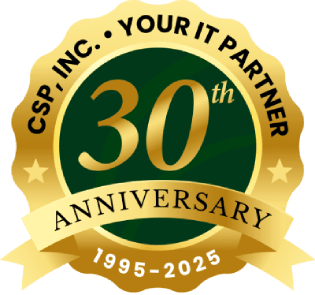Existing CSP Client: (919) 424-2060
SALES: (919) 420-3231

Data mining in the insurance industry is extremely important and crucial to the process of information gathering by companies who indemnify those dependent on accurate coverage, and who wish to improve customer communication and compliance issues. This article will outline how insurance companies can benefit from using modern data mining methodologies to reduce costs, increase profits, improve their CRM and CCM compliance, retain current customers, acquire new customers, and develop new products.

Data Mining Defined
To better understand the nature of data mining, it can be helpful to define the term. It can be known as the process of selecting, exploring, and modeling large amounts of data to uncover previously unknown patterns. In the insurance industry, data mining can help firms gain business advantage. For example, through the application of comprehensive data mining techniques, companies can fully exploit data about customers’ buying patterns and behavior and gain a greater understanding of customer motivations to help reduce fraud, anticipate resource demand, increase acquisition, and mitigate customer attrition.
Recent Legislative Changes Affecting Data Mining
Recent U.S. federal legislation has cleared the way for changes in the way insurance firms can operate and compete in the United States and internationally. Although they have their roots in the Depression era, these legislative changes offer modern-day opportunities and challenges for those insurance firms that employ enabling technologies such as data mining to be more competitive in the growing global economy of the 21st century.
On November 12, 1999, U.S. President Clinton signed into law the Financial Services Modernization Act, which effectively repealed Depression-era financial legislation by enabling insurance companies, banks, and securities firms to affiliate with one another. Prior to that signing, the United States was one of only two major world economies with legislation prohibiting insurance companies, banks, and securities from offering each other’s products and services. The U.S. prohibitions were based on Depression-era judgements made about the causes of the Stock Market crash of 1929 and the ensuing economic woes. Those judgements led to the Glass-Steagall Act of 1933 and to the Bank Holding Company Act of 1956. These changes present significant challenges to, but also opportunities for insurance firms to improve their data mining strategies. The new challenges have been widely seen to have stemmed from:
Implementing Data Mining Projects
There is a lot of talk regarding the best way to implement data mining projects in the insurance industry. Many authoritative books and shorter works that are written by IT experts cover the topic in detail. One message found in many of these works is that implementing a data mining project must consider real-world, practical challenges. A data-centric approach is especially effective and can be divided into the following functional areas:
Reliable Access of the Data
Making sure you’re getting reliable, accurate data is a prerequisite for and foundation of proper data mining. A complete data access strategy should include the following key elements:
A properly designed and implemented data warehouse can help accomplish these key elements of a data access strategy.
A Sharp Focus on Customer Service
Many leading insurance companies are attempting to shift their focus away from the product-oriented models of the past and towards a more customer-centric policy to better serve their customers. Data mining technology can be utilized to better understand customers’ needs and desires. Analysis of marketing campaigns provides in-depth feedback and serves as the foundation of future campaign development.
Exploiting the Results for Business Advantage
The new information obtained from data mining can be incorporated into an executive information or online analytical processing and reporting system, and then disseminated as needed throughout the organization. The firm’s decision makers can then use the data mining results to answer important business-related questions such as, “How can we increase the ROI of our marketing campaigns?” for strategic planning and action. By exploiting data mining results in this manner, firms can better prepare for long-term growth and improve their opportunities for long-term prosperity.
The Takeaway
The key to gaining a competitive advantage in the insurance industry is found in recognizing that customer databases, if properly managed, analyzed, and exploited, are unique, valuable corporate assets. Insurance firms can unlock the intelligence contained in their customer databases through modern data mining technology. Data mining uses predictive modeling, database segmentation, market basket analysis, and combinations thereof to more quickly answer crucial business questions with greater accuracy. New products can be developed and marketing strategies can be implemented enabling the insurance firm to transform a wealth of information into a wealth of predictability, stability, and profitability.
Have Questions About Data Mining Software Development?
If you would like help with setting up and using data mining technology and/or software, talk to a software support specialist at Raleigh IT Support Company and IT Services Provider | CSP Inc., a leader in IT consulting and software support. Call us at (919) 424-2000 or email us at info@cspinc.com to learn more.

Always at your service to provide the highest level of quality support to our customers.

Anthony Firth Client Engineer

“I’m passionate about building and fostering relationships, and finding solutions for success.”

Michael Koenig Client Account Manager

“I help clients stabilize and grow their IT infrastructure so they can focus on growing their core business.”

Josh Wilshire Systems Engineer Team Lead

“I strive to provide the highest level of quality service to our customers.”

Tommy Williams Sr. Hardware Engineer

“I’m driven by the steadfast belief that technology must serve as a business enabler. This mantra has driven 21
Years of successful partnerships.”

Stephen Riddick VP Sales & Marketing

“CSP doesn’t succeed unless your company succeeds.”

Stephen Allen Inventory Manager

“Through my intuition and genuine concern to help others I have built long-lasting relationships with our customers, co-workers and business partners.”

Scott Forbes VP Support Services

“Every day, I work with clients to help plan the future of their businesses.”

Michael Bowman vCIO

“Your IT problems become our IT solutions.”

Mark McLemore Project Engineer

“Managing internal and external operations to ensure that CSP provides quality and reliable customer service .”

Margie Figueroa Business Manager

“Providing quality internal and externals financial support to our customers and accounting support to CSP.”

Katie Steiglitz Accounting Administrator

“Some call me the CEO. I call myself the Cheerleader for an awesome team!”

William B. Riddick Founder & CEO

“CSP is here to assist you with your IT needs.”

Beth Wylie Inside Sales Manager




On What Questions You Need To Ask Before Signing Any Agreement.
"*" indicates required fields

Raleigh IT Support Company and IT Services Provider | CSP Inc.
1310 Nowell Rd,
Raleigh, NC 27607
Existing CSP Client: (919) 424-2060
SALES: (919) 420-3231
Receive email updates and informative marketing materials by subscribing to our newsletter.
"*" indicates required fields